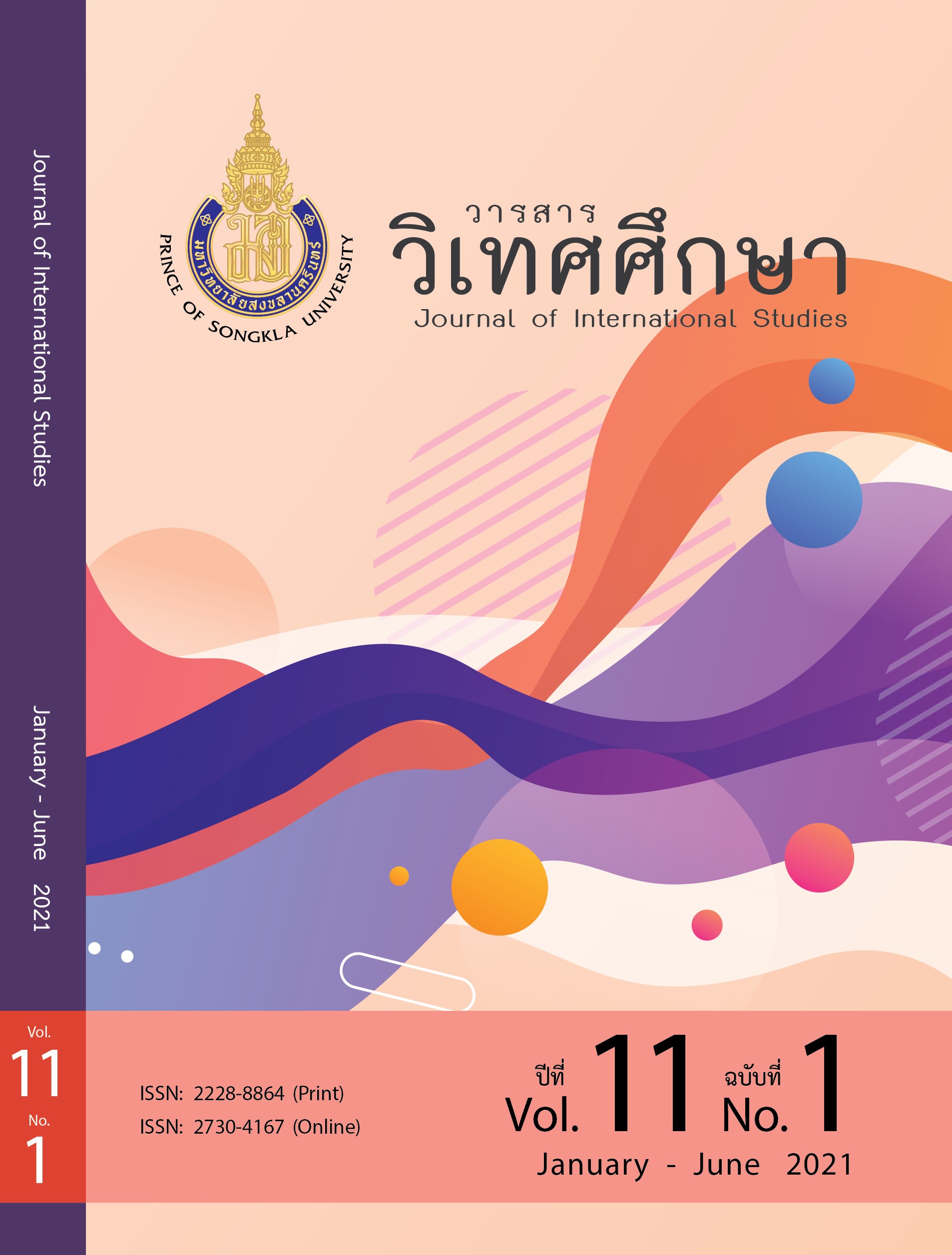The Study of Tourism Risks in Pattaya of Chonburi Province
Main Article Content
Abstract
The purposes of this study were to analyze and assess tourism risk, and suggesting guidelines to respond to the tourism risks of Pattaya, Chonburi Province. This research was a mixed research of qualitative research and action research by collecting data from document, area survey, focus group, and in-depth interviews. The samples were consisted of academics, experts, specialists, tourism business operators and tourists who traveling to Pattaya of Chonburi Province, a total of 70 samples. The research results were found that:
1) Risk issues with a very high level of risk were the traffic risk in Pattaya and the security risk at the seaside and water activities.
2) Risk issues with high levels of risk were the crime risk in entertainment venues, the risk of oceanfront buildings, and disaster risk.
3) Risk issues with medium risk levels were cleanliness risk, and trading risk.
In addition, the guidelines to respond to the tourism risks of Pattaya, Chonburi Province were divided into 4 methods which are Avoidance, Reduction, Sharing, and Acceptance.
Article Details
Statements and opinions expressed in articles herein are those of the authors and do not necessarily reflect the position of the editors or publisher.
Article, information, text, image, etc. which are published in Journal of International Studies, belong to Journal of International Studies. If anybody or any organization would like to use part or whole of them, they must receive written permission from Journal of International Studies before usage.
References
“นายกเมืองพัทยา เดินหน้าแก้ 3 ปัญหาเร่งด่วน,” (2 ตุลาคม 2561). สยามรัฐ. ค้นเมื่อ 16 กันยายน 2563, จาก https://siamrath.co.th/n/49126
ประไพพิมพ์ สุธีวสินนนท์, และประสพชัย พสุนนท์. (2559). กลยุทธ์การเลือกตัวอย่างสำหรับการวิจัยเชิงคุณภาพ. วารสารปาริชาต, 29(2), 31-48.
พรทิพา ปิยะกมลรัตน์. (2556). สภาพแวดล้อมกับการพัฒนา: กรณีศึกษาย่านชายหาดพัทยาใต้. วิทยานิพนธ์สถาปัตยกรรมศาสตรมหาบัณฑิต บัณฑิตวิทยาลัย, มหาวิทยาลัยศิลปากร.
พิมพ์มาดา วิชาศิลป์. (2555). การศึกษาการรับรู้ด้านความเสี่ยงและการป้องกันความเสี่ยง ขณะเดินทางท่องเที่ยวในประเทศไทยของนักท่องเที่ยวต่างชาติประเภทแบกเป้. วารสารการบริการและการท่องเที่ยวไทย, 7(2), 15-26.
เมืองพัทยา. (2558). แผนพัฒนาเมืองพัทยา 3 ปี 2559-2561. ค้นเมื่อ 17 กันยายน 2563, จาก https://bit.ly/2FJX1dA
วารานัย ยุวนะเตมีย์, และอัศวิน แสงพิกุล. (2559). การรับรู้ความเสี่ยงของนักท่องเที่ยวชาวต่างชาติที่เดินทางมาท่องเที่ยวในประเทศไทย. วารสารวิชาการบัณฑิตวิทยาลัยสวนดุสิต, 12(3), 249-259.
ศรีวราห์ รังสิพราหมณกุล, และชยพล ฉัตรชัยเดช. (ม.ป.ป.) การป้องกันอาชญากรรมเชิงรุกโดยทฤษฎีสามเหลี่ยมอาชญากรรม. กรุงเทพฯ: อาระยาการพิมพ์ แอนด์ ซิลค์สกรีน.
สุชาติ เซี่ยงฉิน, ธารี วารีสงัด, ภาวิณี บุณยโสภณ, จิตติมา สุวรัตน์, และ พัชรินทร์ เหสกุล. (2560). การศึกษาวิจัยและวิเคราะห์ข้อมูลเพื่อพัฒนาเมืองพัทยาสู่ประชาคมอาเซียน. วารสารวิชาการพระจอมเกล้าพระนครเหนือ, 27(2), 379−391.
สำนักงานพัฒนาการวิจัยการเกษตร องค์การมหาชน. (2562). คู่มือการบริหารความเสี่ยง. กรุงเทพฯ: สำนักงานพัฒนาการวิจัยการเกษตร (องค์การมหาชน).
สำนักงานประชาสัมพันธ์จังหวัดชลบุรี. (2561). นักท่องเที่ยวจีนวูบ! เมืองพัทยาตื่นเรียกประชุมหน่วยงานเร่งหามาตรการแก้ไข เน้น “ไม่ตาย ไม่เจ็บ ไม่หาย” ระบุสถิติการเสียชีวิตทางน้ำสูงจนน่าวิตกต้องบูรณาการในการสร้างความอุ่นใจและแก้ไขอย่างจริงจัง. ค้นเมื่อ 21 พฤษภาคม 2563, จาก http://thainews.prd.go.th/th/news/detail/TNSOC6111080010101
สํานักยุทธศาสตร์และงบประมาณ. (2561). การเปลี่ยนแปลง เพิ่มเติมโครงการแผนพัฒนาเมืองพัทยา 4 ปี (พ.ศ. 2561 - 2564) ครั้งที่ 3 พ.ศ.2561. ค้นเมื่อ 17 กันยายน 2563, จาก https://www.pattaya.go.th/pattaya-4-year/
สำนักยุทธศาสตร์และงบประมาณ. (2562). แผนพัฒนาเมืองพัทยา (พ.ศ. 2561 - 2565). ค้นเมื่อ 23 พฤษภาคม 2563, จาก https://bit.ly/2B3M1W5
World Tourism Organization. (1996). Tourist Safety and Security: Practical Measures for Destinations. Madrid: World Tourism Organization.


